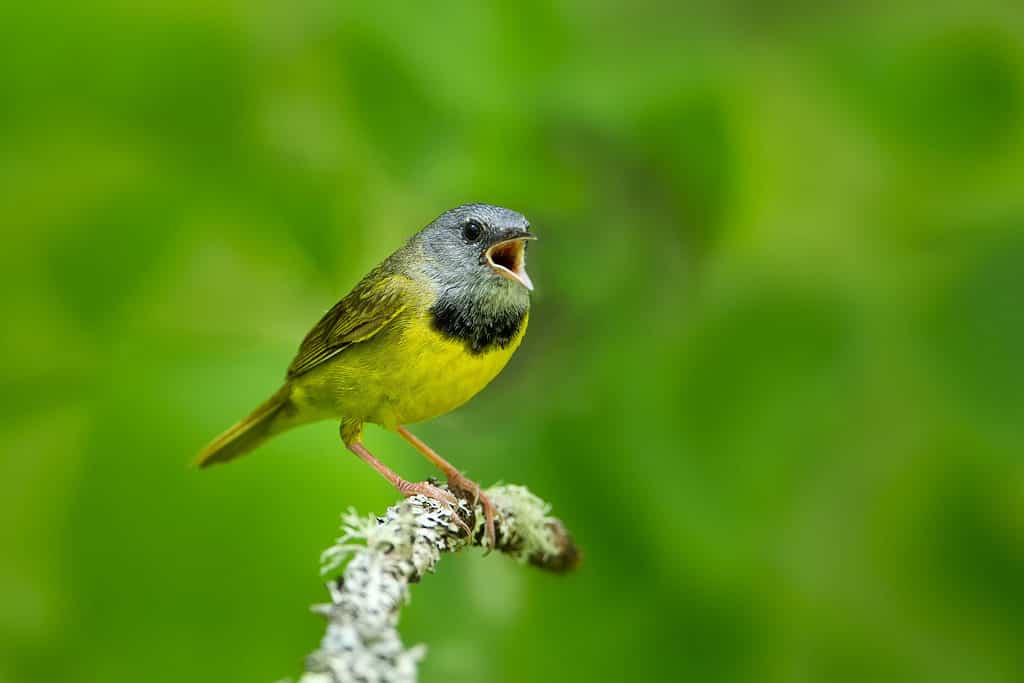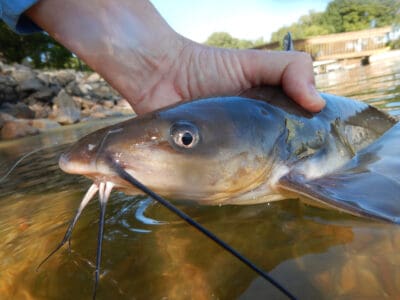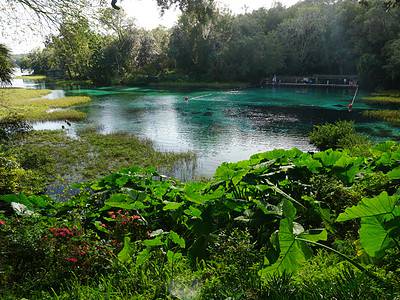Mourning Warbler
Geothlypis philadephia
The Mourning Warbler was named for its gray head, which resembles a mourning veil!
Advertisement
Mourning Warbler Scientific Classification
- Kingdom
- Animalia
- Phylum
- Chordata
- Class
- Aves
- Order
- Passeriformes
- Family
- Parulidae
- Genus
- Geothlypis
- Scientific Name
- Geothlypis philadephia
Read our Complete Guide to Classification of Animals.
Mourning Warbler Conservation Status
Mourning Warbler Facts
- Prey
- Insects and insect larvae, spiders, other invertebrates
- Main Prey
- Insects and larvae
- Name Of Young
- Chicks
- Group Behavior
- Mainly solitary
- Pair
- Fun Fact
- The Mourning Warbler was named for its gray head, which resembles a mourning veil!
- Estimated Population Size
- 14 million mature individuals
- Biggest Threat
- Nest predators
- Most Distinctive Feature
- Gray head that resembles a mourning veil with black crescent at the base
- Distinctive Feature
- Black eye line from top of bill to eyes; narrow, pointy, pink bill with black on top; olive feathers on upper parts; yellow feathers on underparts; pink legs and feet; three toes facing forward and one facing back
- Temperament
- Moderately territorial
- Wingspan
- 7.5 inches
- Incubation Period
- 12 days
- Age Of Independence
- About 36 days
- Age Of Fledgling
- 7 to 9 days
- Habitat
- Sparsely wooded areas, including disturbed or burned forests, with dense undergrowth; shrublands or overgrown grasslands with thickets and dense, low vegetation
- Predators
- Mainly nest predators such as squirrels, chipmunks and raccoons
- Diet
- Omnivore
- Lifestyle
- Diurnal
- Pair
- Favorite Food
- Insects and insect larvae, spiders, other invertebrates, some fruits
- Common Name
- Mourning Warbler
- Location
- Canada, United States, Mexico, Central America, far northwestern South America including parts of Ecuador, Colombia, and Venezuela
- Average Clutch Size
- 4
- Group
- Flock
- Nesting Location
- On or very near the ground
- Migratory
- 1
Mourning Warbler Physical Characteristics
- Color
- Grey
- Yellow
- Black
- Dull Olive
- Skin Type
- Feathers
- Lifespan
- Oldest recorded individual was 7.9 years old.
- Weight
- Average 0.45 ounces
- Length
- Average about 5.2 inches
- Age of Sexual Maturity
- 1 year
- Venomous
- No
- Aggression
- Medium
View all of the Mourning Warbler images!
The Mourning Warbler was named for its gray head, which resembles a mourning veil!
The Mourning Warbler is a member of the Parulidae family of New World or wood warblers. It breeds primarily in Canada and the far northeastern United States, including the Great Lakes region and New England. It migrates through the eastern United States, from the Great Plains to the coast, and along eastern Mexico and parts of the Caribbean to its southern winter grounds in Central America and parts of far northwestern South America. This little yellow-bellied bird with a gray hood is often mistaken for its lookalike, the MacGillivray’s Warbler, which inhabits the western part of North America. In the narrow region where the range of these two warblers overlaps, only skilled birdwatchers can tell them apart.
Incredible Mourning Warbler Facts
- The Mourning Warbler was first described by Alexander Wilson, who collected a specimen in the city of Philadelphia.
- These birds use deception to fool predators, sometimes even pretending to have a broken wing to lure them away from the nest.
- Mourning Warblers may be mistaken for MacGillivray’s Warblers based on appearance, but their ranges mostly do not overlap.
- These warblers nest on the ground or just a foot or two above, in dense thickets.
- Like many ground-dwelling birds, Mourning Warblers leave the nest quickly, after just 7 to 9 days.
- Squirrels are among the most common predators of these birds.
Where to Find Mourning Warblers
Mourning Warblers can be found primarily in the eastern half of the Canada and the United States and south to Central America and far northwestern South America. Their breeding grounds are mainly in southeastern Canada and the northeastern part of the United States. Their range extends as far west as the Great Plains states in the U.S. and as far west as Alberta and a small pocket of British Columbia in Canada. Few confirmed sightings have occurred within or west of the Rocky Mountains.
Migration routes take Mourning Warblers south through the eastern half of the United States and far eastern Mexico. The birds also migrate through parts of the Caribbean and Central America. They eventually arrive at their winter grounds in northern Central America, including Costa Rica and Panama, and far northwestern South America, including parts of Ecuador, Colombia, and Venezuela.
The Mourning Warbler nests and spends most of its time on or near the ground. As such, it prefers disturbed or burned forests with dense undergrowth, or clearings with dense shrubs, briars, or woody thickets in its breeding areas. It also frequents forest edges and cultivated fields or thick grassy areas.
In their winter grounds, these warblers prefer to stay in low-lying areas with access to fresh water. They also require plenty of vegetation within which they can forage. The Mourning Warbler also eats fruits from the trees in its winter habitat.
Mourning Warbler Nests
These birds build cup-like nests on or near the ground. The nests may be placed directly on the ground, usually hidden under a thicket, or one or two feet off the ground in dense vegetation. The nests themselves are made of leaves, grass and weeds. The warblers line the nests with hair or fine grasses.
Scientific Name
The Mourning Warbler’s scientific name is Geothlypis philadelphia. It was first described in 1810 by the ornithologist and poet, Alexander Wilson, three years before his death. He collected a single specimen in Philadelphia, and naming it for the city, called the bird Sylvia philadelphia. The genus, Sylvia, included several different warblers at that time. It was later moved to the genus Oporornis along with a few other warblers based on appearance and behavior. By 2011, all but one of these was reassigned to the Geothlypis genus based on genomic results.
Geothlypis means ground bird and is a reference to the tendency to live and nest on or near the ground. This genus includes more than a dozen warbler species known as the yellowthroats.
Mourning Warbler Appearance
The Mourning Warbler’s common name is a reference to the gray plumage on its head and neck. This coloration resembles a mourning veil and is a defining characteristic of the bird. Males have a strong, black patch at the base of their gray hood, where it meets the bright yellow breast. This black patch is shaped like a wide crescent opening toward the head. They also have a black eye line running from the top of the bill to the eye. Immature males have a yellow throat and black speckles where their black patch will eventually fill in. Females lack these black markings and have lighter gray hoods.
Mourning Warblers are small birds averaging about 5.2 inches in length with a wingspan of 7.5 inches. They weigh approximately 0.45 ounces. Both sexes have olive feathers on their upper body and bright yellow on their underparts. Their pointy beaks are pinkish, though adult males are tinged with black. They have pink legs and delicate feet with three toes facing forward and one facing back.

A male Mournimg Warbler,
Geothlypis philadelphia, sings while perching on a branch.
©Agnieszka Bacal/Shutterstock.com
Mourning Warbler Behavior
The Mourning Warbler is diurnal, but most active in the early morning and near dusk. Because it lives so near the ground, and usually in thick vegetation, it is good at hiding. It flits from branch to branch or stem to stem and tends to hop along the forest floor rather than walk. However, when threatened it may scurry much like a mouse to distract a predator away from its nest.
Mourning Warblers forage quietly for insects and other prey among the leaf litter on the forest floor. Females do not sing, but males do. Males fly up to higher branches in trees to sing their songs, especially during breeding season. They can usually be heard before mid-morning and as twilight approaches in the evening. They have a two-syllable call that usually repeats four or five times, descending at the end. In Wilson’s description of the bird, he said it “had a sprightly and pleasant warbling song, the novelty of which first attracted my attention.” Other observers have described the song as sounding like, “chirry-chirry-chirry-chorry-chorry.”
Mourning Warblers are somewhat territorial. Multiple adults may nest within the same territory, covering about two acres, and males will actively defend it. They mainly use a territorial “tshrip” call to warn other birds away, along with posturing including aggressive bobbing and wing flapping. Females also use the territorial call and behaviors when defending the nest.
Migration
Mourning Warblers migrate each year, from their breeding grounds in the north to their winter grounds to the south and back again. They arrive late in the season, sometimes as late as June, to their breeding grounds in Canada and the northeastern United States. The timing of their arrival depends on the seasonal weather. They show up by late spring in warm years and in the summer in colder years. They migrate south to Central and South America in the fall, leaving sometime between late August and early November. Again, the timing of their migration likely depends on the seasonal weather each year.
Because these warblers prefer to nest in disturbed forests in the early stages of regrowth, they may not be able to return to the same territory when migrating back to their breeding grounds. As forests mature, the dense undergrowth the birds rely on can disappear. Therefore it may take longer for Mourning Warblers to find suitable nesting locations and establish new territories than many other migrating songbirds.
Diet
Mourning Warblers are omnivorous birds. They eat fruits, particularly in their winter grounds, however their diet consists mostly of insects and insects and other invertebrate prey. They eat both mature insects and their larvae, spiders, and perhaps other arthropods. These birds forage mainly on the forest floor or beneath thickets, using their pointy beaks to capture prey. They also sometimes catch insects on the wing. Interestingly, they tend to rip the legs and wings off their prey before consuming them.
According to reports from the field, nestlings are fed mainly larvae from butterflies and moths, although parents feed them other insects as well. Although the young leave the nest after only about one week, the parents continue to provide food and care for the for about a month after they fledge.
Mourning Warbler Reproduction
Mourning Warblers reach sexual maturity after approximately one year. They build cup-shaped nests of leaves, grass and weeds on the ground, usually within a thicket that will provide cover. Sometimes they build their nests a foot or two off the ground in dense vegetation. They lay an average of 2 to 5 eggs and have just one brood per year. The female incubates the eggs alone for 12 days, while the male guards the territory. Both parents feed the chicks during the short nestling period. They fledge after just 7 to 9 days, but the parents continue to care for the young offspring up to four weeks after that.
Predators
Forest dwelling birds such as Mourning Warblers are vulnerable to birds of prey such as owls and hawks. They are also likely to be preyed upon by domestic cats. The most common nest predators of these particular warblers are different types of squirrels, including ground squirrels and red squirrels, chipmunks, and raccoons.
Mourning Warblers employ a couple of clever methods to distract predators from their nests. Females incubating eggs will stay on the nest as a predator draws near, hiding quietly as long as possible to avoid detection. If exposure is unavoidable, they will leave the nest and scurry quickly on the ground, moving much like a mouse, until they are at least 20 or 25 feet away before flying to safety. Both males and females also distract predators by pretending to have a broken wing and dragging it on the ground to draw the predator’s attention and lure it away from the nest.
Lifespan
The oldest recorded Mourning Warbler in the wild was 7.9 years old. There is little information regarding the average lifespan of these birds. With an estimated population of approximately 14 million mature adults, the IUCN Red List for Threatened Species lists the Mourning Warbler as a species of least concern. Their population is believed to be decreasing moderately. Researchers believe that the bird’s natural tendency to use disturbed or burned forests may allow it to thrive in fragmented habitat where many other birds have suffered.
Similar Animals
- Canada Warbler – This warbler shares a similar range with the Mourning Warbler. It has a black speckled necklace between its yellow neck and breast.
- Kentucky Warbler – This member of the Geothlypis genus ranges further south than the Mourning Warbler and has distinctive black spectacles.
- Common Yellowthroat – This bird is a warbler from the Geothlypis genus. It has a prominent black mask rimmed in white.
Mourning Warbler FAQs (Frequently Asked Questions)
What do Mourning Warblers look like?
Males have a strong, black patch at the base of their gray hood, where it meets the bright yellow breast. They also have a black eye line running from the top of the bill to the eye. Immature males have a yellow throat and black speckles where their black patch will eventually fill in. Females lack these black markings and have lighter gray hoods. Both sexes have olive feathers on their upper body and bright yellow on their underparts. Their pointy beaks are pinkish, though adult males are tinged with black. They have pink legs and delicate feet with three toes facing forward and one facing back.
How big are Mourning Warblers?
Mourning Warblers are small birds averaging about 5.2 inches in length. They weigh approximately 0.45 ounces.
What is the Mourning Warbler’s wingspan?
The Mourning Warbler’s wingspan is 7.5 inches.
How fast do Mourning Warblers fly?
Mourning Warblers fly fast with rapid wingbeats and a bouncy pattern during their short flights in pursuit of winged insects.
How many varieties of Mourning Warblers exist?
There is only one species of Mourning Warbler, Geothlypis philadelphia, and no recognized subspecies.
What makes Mourning Warblers special?
The Mourning Warbler was named for its gray head, which resembles a mourning veil.
Where do Mourning Warblers live?
Mourning Warblers have a breeding range in Canada, from Alberta and a small pocket of British Columbia to the east, and the far northeastern United States. Their winter range includes Central America and far northern South America, and they migrate across the eastern United States and Mexico, and parts of the Caribbean. They prefer disturbed or burned forest with dense undergrowth or shrublands and grasslands with ample thickets for nesting and foraging.
Do Mourning Warblers migrate?
Mourning Warblers migrate from Canada to Central America and far northern South America.
What do Mourning Warblers eat?
Mourning Warblers eat mainly insects and other invertebrates. They are known for ripping the wings and legs off their prey. They feed nestlings mainly the larvae of butterflies and moths. These birds also eat fruit in their winter habitat.
How many eggs do Mourning Warblers lay?
Mourning Warblers lay an average of 2 to 5 eggs. They typically have just one clutch per year.
When do Mourning Warblers leave the nest?
The incubation period of Mourning Warblers is 12 days, and the chicks fledge after about 7 to 9 days. Parents continue to look after them for about four weeks after they leave the nest.
How long do Mourning Warblers live?
The oldest recorded Mourning Warbler in the wild was 7.9 years old.
Are Mourning Warblers rare?
Mourning Warblers are not considered rare. They are a species of least concern on the IUCN Red List of Threatened Species, with approximately 14 million mature individuals. Their numbers are decreasing moderately.
Thank you for reading! Have some feedback for us? Contact the AZ Animals editorial team.
Sources
- Alexander Wilson, Available here: https://www.biodiversitylibrary.org/page/46337283#page/115/mode/1up
- George W. Cox, Available here: https://sora.unm.edu/sites/default/files/journals/wilson/v072n01/p0005-p0028.pdf
- IUCN Red List, Available here: https://www.iucnredlist.org/species/22721824/137320329#population

















